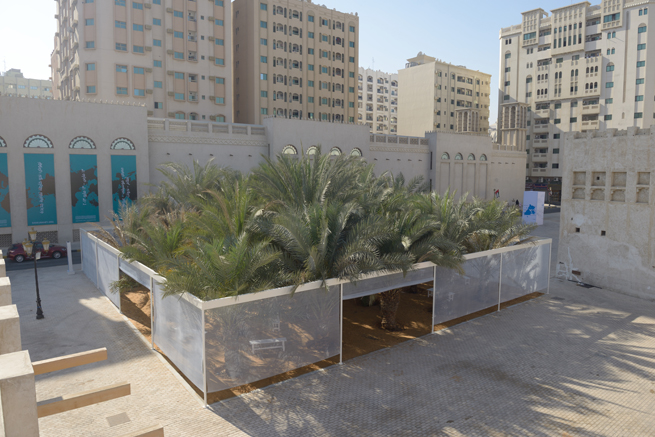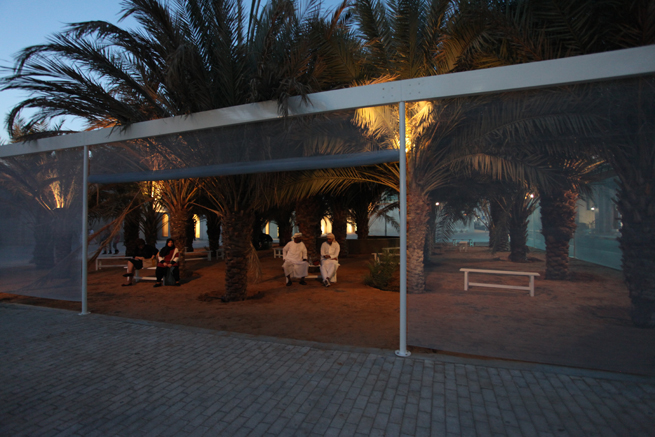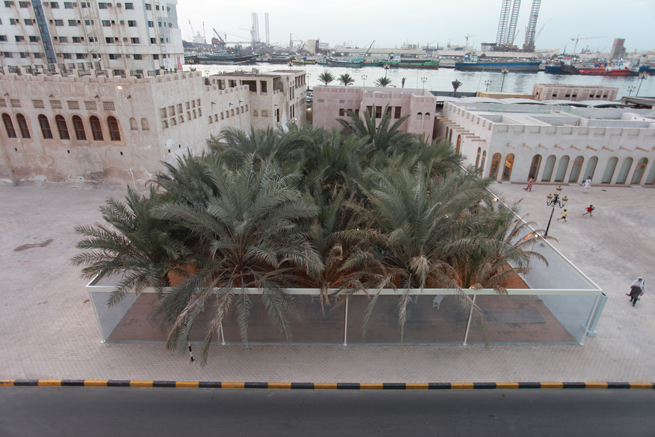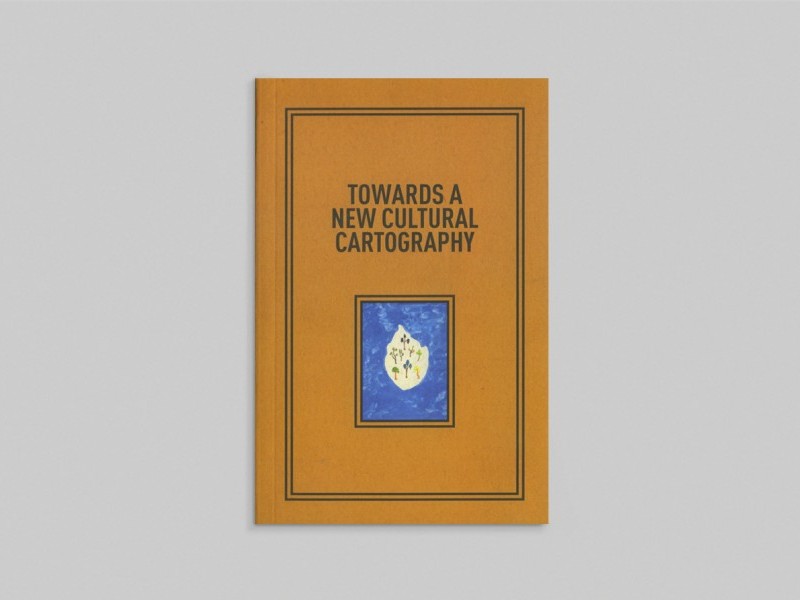This project is inspired by traditional arish architecture – an ancient method of construction using dried palm leaves – and the oasis, an anomaly in the desert where water is found and vegetation carefully cultivated. It is also rooted in three of our previous projects, developing principles that we have tested elsewhere added to define yet another courtyard or space, constantly blurring the boundaries between the fixed and transforming them for a new site and set of conditions.
In 2005, we created a Border Garden between Mexico and the United States. This was a walled palm garden based on an oasis that we encountered in the M’zab region of Algeria, which we transplanted into the desert on the US-Mexico border. In 2008, for the Venice Architecture Biennale, we surrounded the Belgian Pavilion with a metal wall, defining a space with a temporary structure that seems to be permanent. Two years later, we created another project for the Venice Architecture Biennale, Garden Pavilion (7 Rooms/21 Perspectives, which consciously created a sense of ambiguity between garden and pavilion space.
For OASES, we have inserted three oases into Sharjah’s Heritage Area, where fragments of the city’s original street plan can still be found. These oases fill a void in the historical city, emphasising the area’s mazelike character. At the same time, the oases are conceived as gardens or courtyards that project inward, concealed by the streets and buildings. In many ways, these new structures are contemporary versions of the arish additions at the borders of the old city. Traditionally, these light perimeters were continuously the temporary. The new garden pavilions we created for the Sharjah Biennial apply this logic in the present, creating a set of oases for public use.
The three oases are conceived as palm-tree gardens surrounded by a perimeter of steel mesh. Each location inspired a slightly different garden. The oasis at the mosque contains a drinking fountain, and it emulates the mosque’s columns, creating a counterpoint to its interior. The oasis on the square divides the open space into smaller segments; inside this oasis is a bar for juice or tea, an enhancement that reflects the square’s current use as a playground for children and families. The garden oasis is the least public one, completely disconnecting those inside from the surrounding city; conceived as a “talking garden”, it contains a circular space, defined by an interior wall of concrete, with a set of chairs, enabling intimate conversation.
2013
This project was part of Sharjah Biennial 11
Commissioned by Sharjah Art Foundation





